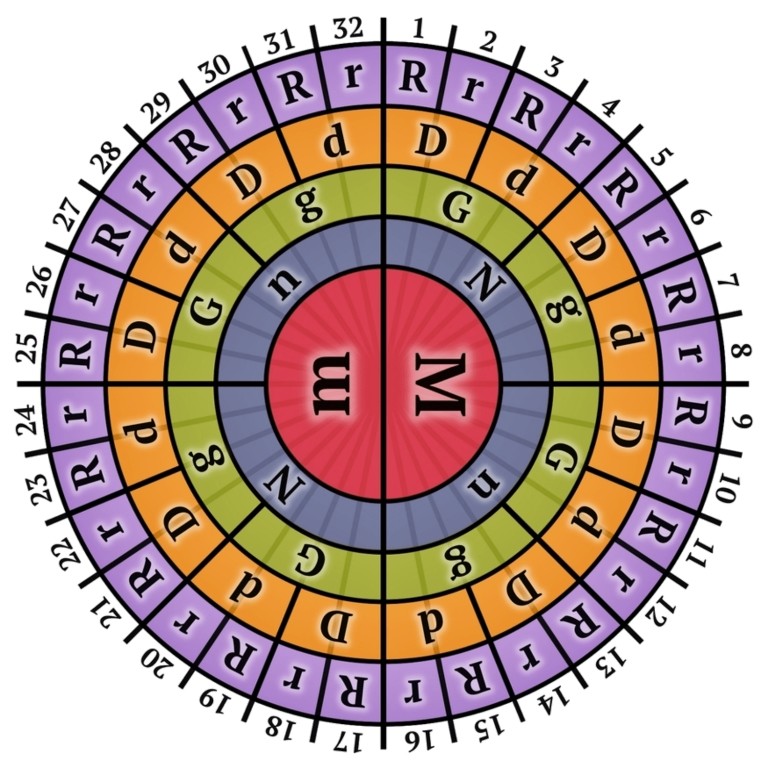John Carlos Baez on Nostr: Hindustani music has lots of ragas, but they're often organized into the 32 kinds ...
Hindustani music has lots of ragas, but they're often organized into the 32 kinds shown here, of which only 10 are very commonly used. These kinds are called "thaats".
Each thaat is a 7-note scale. I'll explain them in a western way, not an Indian way. This will make it clear how 𝑢𝑛𝑠𝑢𝑟𝑝𝑟𝑖𝑠𝑖𝑛𝑔 the ideas are to anyone who has studied western music theory.
Let's imagine our thaat starts with the note C. Then:
• it must contain C
• it must contain D or D♭, but not both.
• it must contain E or E♭, but not both.
• it must contain F or F♯, but not both.
• it must contain G
• it must contain A or A♭, but not both.
• it must contain B or B♭, but not both.
So, we get 2⁵ = 32 thaats. It's really unsurprising that C and G are locked in place, while the other 5 notes are flexible - after all, C and G are the 'tonic' and 'dominant', also called the 1 and 5, the most important notes in a scale.
A lot of thaats match familiar western modes, but later I'll show you one that may not. Maybe some expert on jazz can say if they've seen it.
Thaats are just the start of the story, since we can get extra ragas by leaving out some notes in a thaat... and as a result, different ragas can come from the same thaat.
But there's a more urgent issue: what are all the letters in this chart? The notes in the thaat are called
sa re ga ma pa dha ni
or for short
S R G M P D N
These are a lot like the western "do re mi fa so la ti".
But as I've said, we get a binary choice only for 5 of these notes, namely R G M D N, since the other 2 are locked in place. That's what the chart shows. It's a binary tree with 32 leaves, namely the thaats.
(1/n)

Each thaat is a 7-note scale. I'll explain them in a western way, not an Indian way. This will make it clear how 𝑢𝑛𝑠𝑢𝑟𝑝𝑟𝑖𝑠𝑖𝑛𝑔 the ideas are to anyone who has studied western music theory.
Let's imagine our thaat starts with the note C. Then:
• it must contain C
• it must contain D or D♭, but not both.
• it must contain E or E♭, but not both.
• it must contain F or F♯, but not both.
• it must contain G
• it must contain A or A♭, but not both.
• it must contain B or B♭, but not both.
So, we get 2⁵ = 32 thaats. It's really unsurprising that C and G are locked in place, while the other 5 notes are flexible - after all, C and G are the 'tonic' and 'dominant', also called the 1 and 5, the most important notes in a scale.
A lot of thaats match familiar western modes, but later I'll show you one that may not. Maybe some expert on jazz can say if they've seen it.
Thaats are just the start of the story, since we can get extra ragas by leaving out some notes in a thaat... and as a result, different ragas can come from the same thaat.
But there's a more urgent issue: what are all the letters in this chart? The notes in the thaat are called
sa re ga ma pa dha ni
or for short
S R G M P D N
These are a lot like the western "do re mi fa so la ti".
But as I've said, we get a binary choice only for 5 of these notes, namely R G M D N, since the other 2 are locked in place. That's what the chart shows. It's a binary tree with 32 leaves, namely the thaats.
(1/n)
